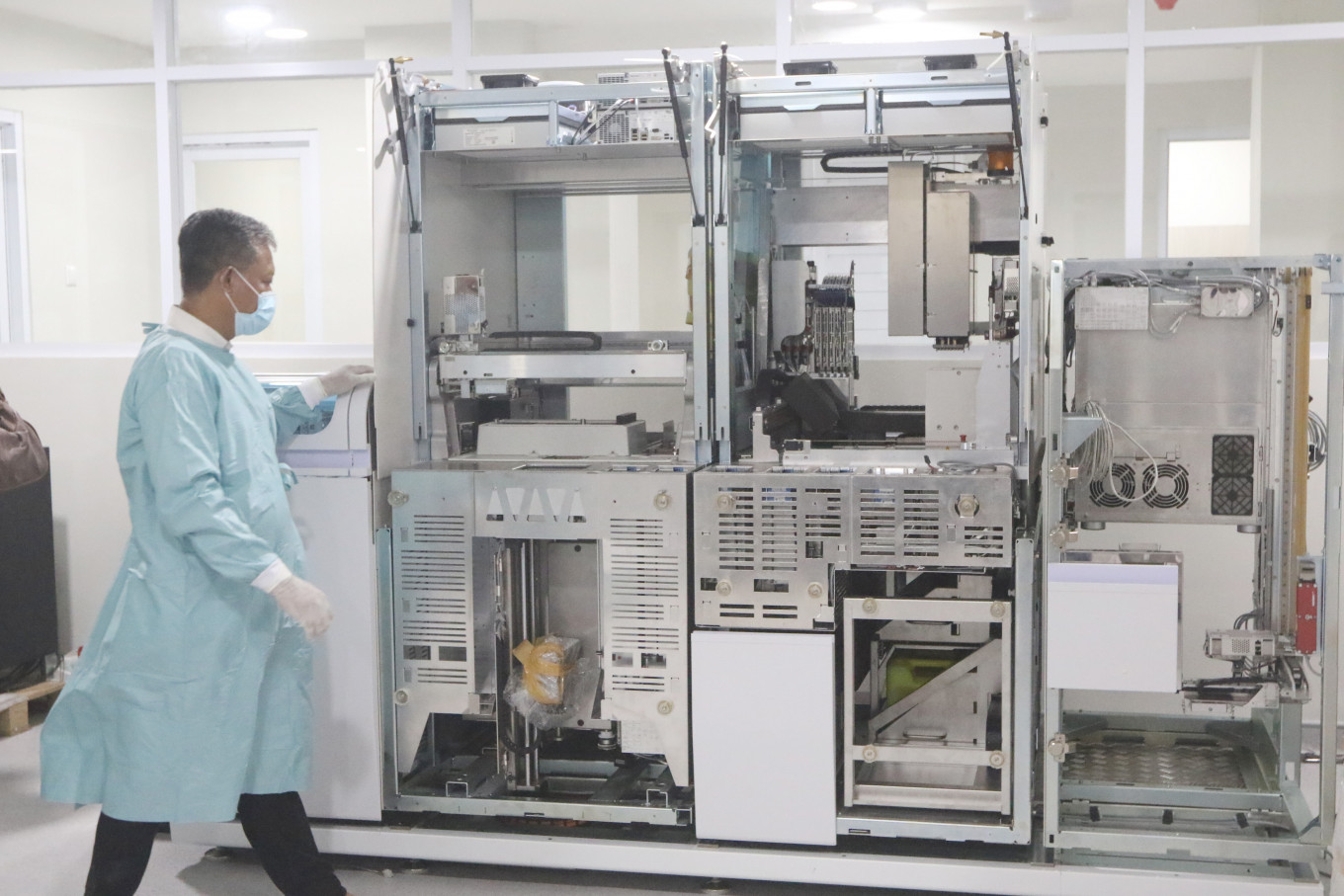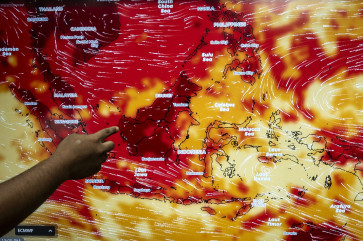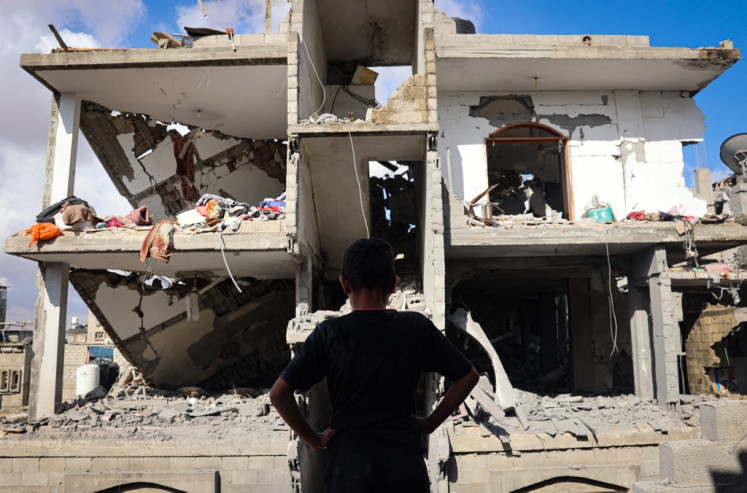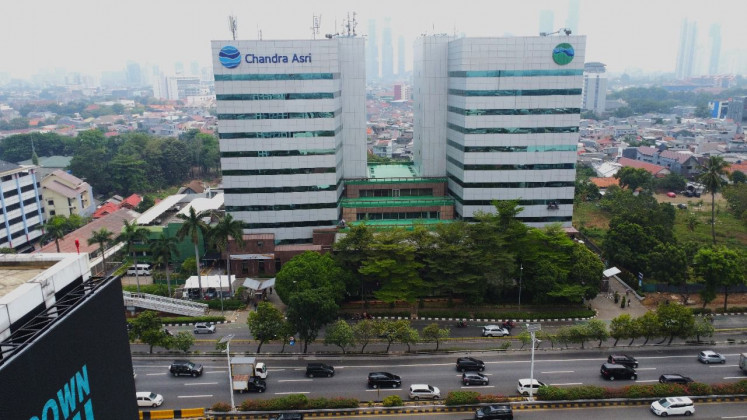Testing gap across provinces slows down COVID-19 response in Indonesia
The country is now operating 269 laboratories to run polymerase chain reaction (PCR) tests.
Change Size
 A medical worker checks COVID-19 swab testing equipment at Pertamina Jaya Hospital Laboratory in Cempaka Putih, East Jakarta, on April 6. (JP/Dhoni Setiawan)
A medical worker checks COVID-19 swab testing equipment at Pertamina Jaya Hospital Laboratory in Cempaka Putih, East Jakarta, on April 6. (JP/Dhoni Setiawan)
W
ith the COVID-19 pandemic requiring an unprecedented scale of laboratory testing, Indonesia continues to face disparities in testing between regions in the vast archipelago.
The country is now operating 269 laboratories to run polymerase chain reaction (PCR) tests for diagnoses, from only 12 labs allowed by the Health Ministry in mid-March, when the country reported its first confirmed cases.
Half of these labs are located in Java, Indonesia's most populous island that is home to some 141 million of the country's 270 million population.
Java is at the advantage of being the home base for many ministry-run laboratories, state universities and private hospitals and labs. In Jakarta, most of the labs are run by ministries or private entities.
All 34 provinces now have their own PCR machines, but provinces like Riau, home to some 7 million people, North Maluku, North Kalimantan and Southeast Sulawesi only operate one lab each, while Jambi, Bengkulu, Central Kalimantan, Gorontalo and Maluku have two labs each.
Read also: COVID-19 leaves lab workers grappling with unprecedented testing scale
The head of Andalas University's infectious disease diagnostic and research laboratory, Andani Eka Putra, acknowledged there was a lab disparity even prior to the outbreak, but what he regretted most was the "centralism" seen from the government at the beginning of the epidemic.
"I remember the South Korean government gathering everyone with lab competency — be it from the health sector, universities or research agencies — in the early days of the pandemic, asking everyone to work together as one,” he said.
“Here, we went the other way: it was all centralized. As a result, we were paralyzed. Now all suitable labs are allowed to participate in testing, [but] quality control is not clear.”
The 12 labs allowed to run the tests in mid-March were mostly Health Ministry labs. The number grew gradually before the ministry eventually allowed a wider network of labs, including private ones, to conduct testing after President Joko "Jokowi" ordered the upscaling of tests in April.
He has since ordered the further upscaling of tests to 30,000 samples per day, but in the past week, the number of new samples tested hovered at around 20,000 a day and the number of new people tested at 14,000 per day.
Indonesia has tested a total of 1.2 million swab samples from 737,844 people, but experts say testing remains concentrated in several areas, with Jakarta accounting for 30 percent of the total samples tested.
Health Ministry data dated July 19 and obtained by The Jakarta Post showed that Jakarta, with 44 labs, had run 377,235 tests, or 35,438 tests per 1 million population.
Hardest-hit province East Java, home to roughly 40 million people, has run 107,074 tests, or 2,685 tests per 1 million people.
Indonesia's most populous province West Java, with a population of almost 50 million, has run 111,716 tests, or 2,237 per 1 million population.
Central Java, which has seen an average of 250 daily new cases in the past week and is home to 35 million people, has run 80,737 tests or 2,311 per 1 million people.
The most populous province outside Java, North Sumatra, which has a population of 15 million, has run 23,669 tests or 1,610 tests per 1 million people.
Some provinces recording confirmed cases below 300, such as Aceh, West Sulawesi, Jambi, Lampung and Central Sulawesi, have each run less than 1,000 tests per 1 million population. Jambi has the lowest rate with 142 tests per 1 million population, West Sulawesi with 413 tests, Lampung 448 and Central Sulawesi 906.
Read also: Govt launches mobile laboratory to increase COVID-19 testing capacity
The World Health Organization has recommended a minimum case detection benchmark of 1 test per 1,000 population per week to be able to define a region's positivity rate.
It suggests a positivity rate of 5 percent and lower for two weeks as part of the criteria in assessing coronavirus transmissions. The Health Ministry's revised guidelines on COVID-19 response have also adopted this criterion.
But the WHO's latest situation report on Indonesia revealed that in Java, only Jakarta had so far met this benchmark.
Nasser, an expert staffer on Indonesia's COVID-19 task force, said five other Java provinces had yet to meet the benchmark given their large populations. The problems, he said, did not only stop at the number of labs.
"There is a problem with human resources, also with the [slow] reporting of results and reagents. There are labs using reagents that turn out to be unsuitable, so they have to change the reagents or the kits," he said. “Everything is so sudden and new, so there wasn’t really any time to prepare the labs well."
In densely populated areas like in Java and Sumatra, Nasser said the aim was to have a lab within every 100 or 200 kilometers — in other words, in every city and regency. On other islands with a smaller population and lower population density, a small number of labs would suffice as long as authorities ensured the smooth transportation of test samples, he said.
Andani of Andalas University said meeting the minimum testing benchmark and positivity rate was important for all regions, including those with few labs, to prevent regions from tampering with testing numbers to maintain or earn a low-risk status.
He said regions with a small number of labs could meet the benchmark by hiring more lab workers to allow them to run tests at their full capacity, 24 hours a week. A lab needs to employ at least 60 workers to test 4,000 samples per day, he added.
"Labs can run at their fullest capacity as long as they want to be open to recruiting graduate and post-graduate students with experience in molecular [biology], even if they are not working in the health sector.”
But local administrations should also provide incentives and living accommodation to protect workers being exposed to the virus and avoid the risk of them contaminating the labs, he said, adding that they must also intensify contact tracing.









